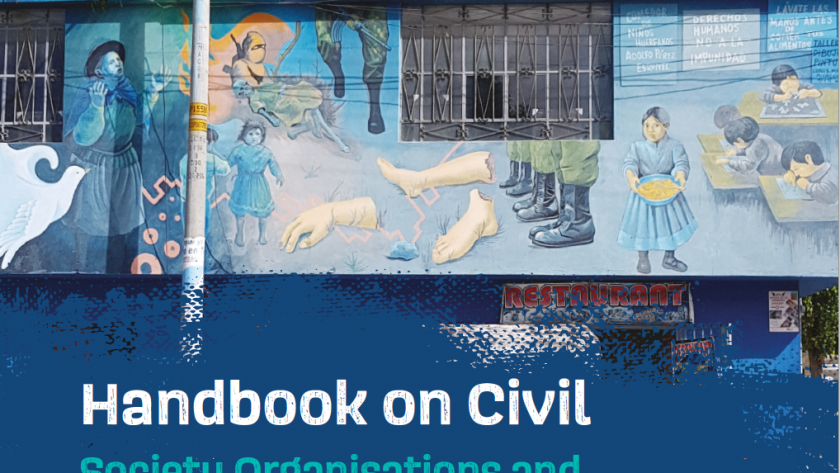Handbook – Civil Society Organisations and Donors Engagement on Reparations

This handbook is directed at civil society organisations (CSOs) and donors involved in reparations processes. It draws on comparative international fieldwork undertaken in six different countries to offer practical guidance and advice on how CSOs and donors can, and should, be involved in reparation processes in post-conflict contexts. Recognising the important role that both CSOs and donors have to play in reparations processes, the handbook seeks to encourage a more victim-centric approach to reparations. Using insights gained from discussions with victims, practitioners and policy makers, it presents a model of good practice based on consultation so that victims’ needs are clarified, the best way of meeting these is identified, and informing their expectations.
The handbook is structured as follows. It opens by defining and clarifying key concepts like reparations, CSO and donor. It then proceeds to discuss the relevance of each concept to transitional justice processes. The handbook then critically examines the role that CSOs can and should play in reparations processes. It identifies the many roles that CSOs perform on the ground in post-conflict societies and the unique contribution that they can make to reparation processes. This is followed by a section that analyses the role that donors can play in reparations processes. While there are many benefits to donor involvement in reparations processes, we acknowledge and discuss some of the challenges that increased donor involvement may present for reparations processes. The handbook then continues by exploring how CSOs and donors can coordinate with victims on reparations issues. Here we suggest that these engagements should be based on genuine consultation and co-ownership that facilitates victim participation in the design, implementation and monitoring of reparation programmes. This consultative approach can allow victims’ needs to be identified and provide them with a better understanding of how reparations processes work. This will help inform the expectations of victims in terms of what they can expect from such bodies, how long it will take for this to be delivered, and avenues to struggle for better outcomes. The handbook closes by providing policy advice for CSOs and donors to adopt and incorporate into their policy and practiceThis handbook is directed at civil society organisations (CSOs) and donors involved in reparations processes. It draws on comparative international fieldwork undertaken in six different countries to offer practical guidance and advice on how CSOs and donors can, and should, be involved in reparation processes in post-conflict contexts. Recognising the important role that both CSOs and donors have to play in reparations processes, the handbook seeks to encourage a more victim-centric approach to reparations. Using insights gained from discussions with victims, practitioners and policy makers, it presents a model of good practice based on consultation so that victims’ needs are clarified, the best way of meeting these is identified, and informing their expectations. The handbook is structured as follows. It opens by defining and clarifying key concepts like reparations, CSO and donor. It then proceeds to discuss the relevance of each concept to transitional justice processes. The handbook then critically examines the role that CSOs can and should play in reparations processes. It identifies the many roles that CSOs perform on the ground in post-conflict societies and the unique contribution that they can make to reparation processes. This is followed by a section that analyses the role that donors can play in reparations processes. While there are many benefits to donor involvement in reparations processes, we acknowledge and discuss some of the challenges that increased donor involvement may present for reparations processes. The handbook then continues by exploring how CSOs and donors can coordinate with victims on reparations issues. Here we suggest that these engagements should be based on genuine consultation and co-ownership that facilitates victim participation in the design, implementation and monitoring of reparation programmes. This consultative approach can allow victims’ needs to be identified and provide them with a better understanding of how reparations processes work. This will help inform the expectations of victims in terms of what they can expect from such bodies, how long it will take for this to be delivered, and avenues to struggle for better outcomes. The handbook closes by providing policy advice for CSOs and donors to adopt and incorporate into their policy and practice.



